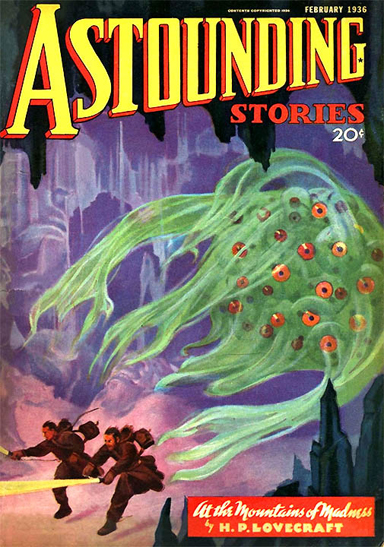
Picture credit: scifi.darkroastedblend.com
We live in a gilded age of adaptations: films, TV series, theatrical productions (often with added songs) and, most recently, graphic novels. People are much more likely now to have experienced an interpretation of the original than they are to have read the actual book. Literary classics don’t come much trickier to re-envision for a new generation than H. P. Lovecraft’s short novel At the Mountains of Madness.
Guillermo del Toro, director of Hellboy and Pan’s Labyrinth — populist or arthouse, take your pick — has been trying to film this horror/SF masterwork for several years and shooting starts in 2011. An irrepressible fan has already made him a trailer. In the meantime, Self Made Hero, a London publisher of graphic novels, has just launched its own interpretation, adapted and drawn by I. N. J. Culbard, a director of animation and comics artist.
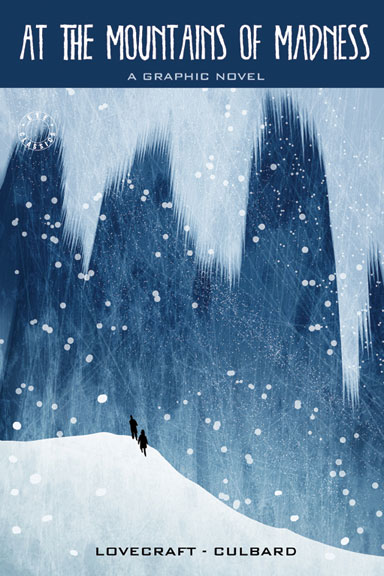
For those who love his writing, Lovecraft occupies a satisfyingly uncertain position between high-class pulp fiction and the literary canon. Marginalized as a purveyor of ludicrously lurid horror — At the Mountains of Madness (1931) was first published in 1936 in Astounding Stories — he was honored only by practitioners and aficionados of the weird. Lately, though, his work has been reissued as modern classics and in definitive library editions with scholarly notes. The controversial French novelist Michel Houellebecq wrote a literary study, the Ballardian website pondered the links with Ballard, and a conference at Goldsmiths University in London considered Lovecraft in relation to theory.
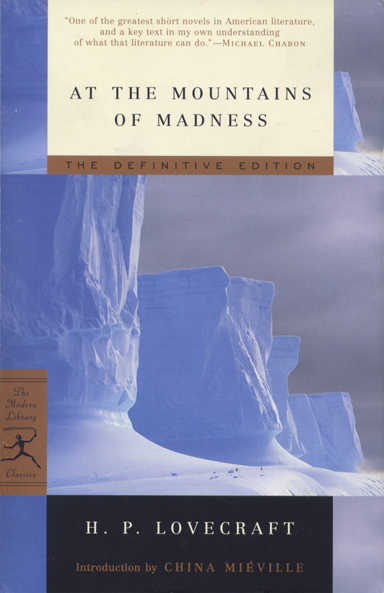
Lovecraft has always posed a problem for anyone trying to turn the writer’s nightmares into visual imagery. The stories’ peculiar pleasure lies in the fully developed mythology that interconnects them, and in the morbidly refined vocabulary Lovecraft uses to evoke cosmic horrors too awful to describe, monstrous things from out of space and time too unfathomable to name, treading a fine line between an exquisitely apt descriptive style and embarrassingly purple prose. Lovecraft’s warped psychology and aberrant obsessions are best savored within the limitlessly accommodating theater of your own imagination. The risk with any attempt to make his spectral inventions literal and solid is that they will just look silly.
In At the Mountains of Madness, two explorers make discoveries in the Antarctic too unbearably alarming, they conclude, to be revealed to the world. It isn’t giving much away to say that there are hideous beings (Old Ones), some fabulously strange architecture, and hints of a devastating threat. Culbard does a perfectly capable job of breaking down the story into a fluently drawn, fast-moving narrative, but the Lovecraftian elements and tropes, the lunatic excesses piled on with absolute conviction and the stifling atmosphere of dread, elude him. In the original, an autopsy report furnishes a scientifically precise description of one of the creatures, down to the last sac-like swelling, breathing slit, and membraneous fin — an illustrator’s gift. Culbard’s Old One, which I won’t show here, looks like a plastic vegetable crossed with rubber bat wings.
Lovecraft describes the city as a “Cyclopean maze of squared, curved and angled blocks”… an “endless labyrinth of colossal, regular and geometrically eurhythmic stone masses which reared their crumbled and pitted crests above a glacial sheet”… an edifice composed of “geometrical forms for which an Euclid could scarcely find a name.” In the graphic novel, this composure-dissolving spectacle of an unimaginably advanced and unknown civilization crumbling into ruin in the frozen wastes becomes a decorous, Manhattanesque towerscape with a few minor cracks.
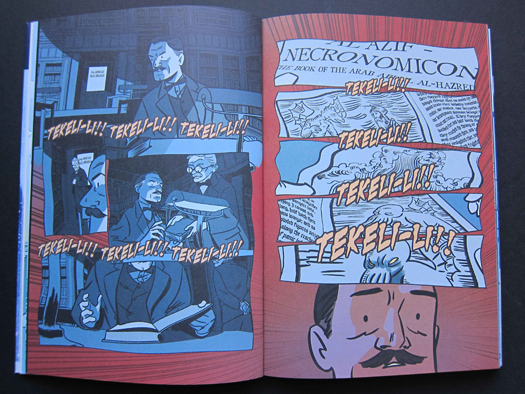
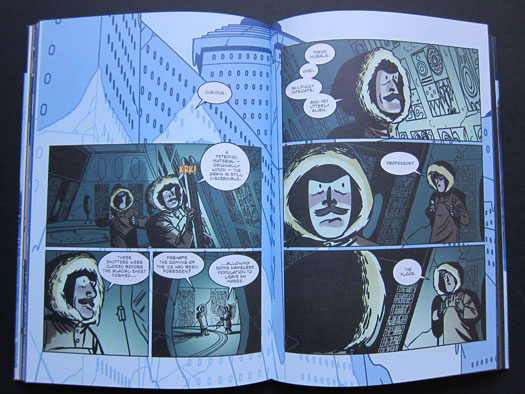
Despite the contradictions inherent in visualizing mysterious entities that depend on being unknowable for their mental frisson and disquieting ontological effect, there have been some convincing interpretations of Lovecraft from image-makers who feel an affinity with his writing. A paperback cover created by Ian Miller for a collection published in 1974 shows that one fruitful way to approach Lovecraft is to combine detailed drawing closely based on his descriptions with an otherworldly chaos of form and a febrile sensation of deep psychic malaise.
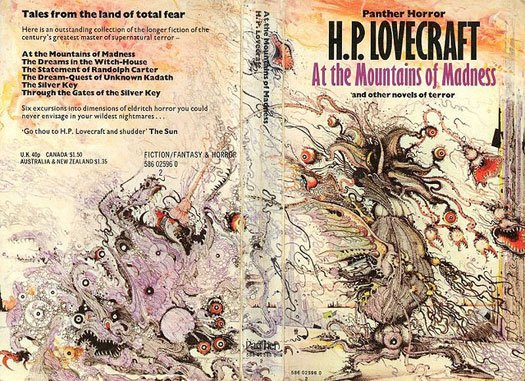
Picture credit: Mavmaramis at Flickr
A cover for At the Mountains of Madness (2005) by Electric Masada, American composer and saxophonist John Zorn’s group, has a similar current pulsing through its filaments, though the links to Lovecraft’s book are more tenuous here.
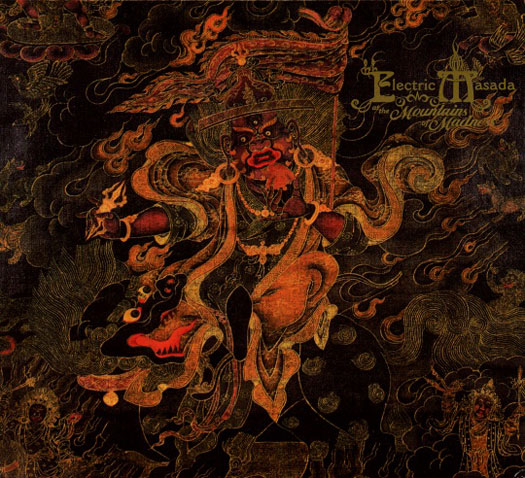
More recent visual communication also has its Lovecraft devotees. In the 1990s, the British illustrator and designer John Coulthart produced some brilliantly dark, scratchy, densely worked and oppressive interpretations gathered in his book The Haunter of the Dark (1999) — as in this image of R’lyeh from Lovecraft’s “The Call of Cthulhu.”
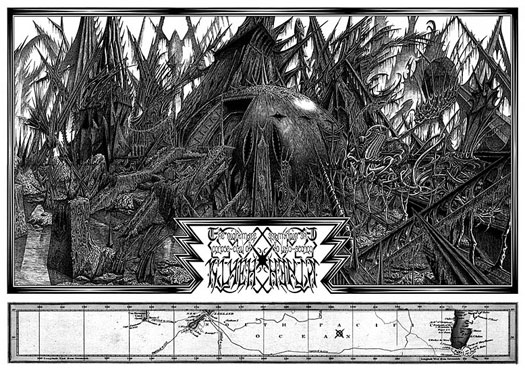
Coulthart also took a stab at illustrating At the Mountains of Madness before running out of juice with Lovecraft, but concedes that the only completed image looks more like one of Piranesi’s prison etchings. In the painting below, Coulthart’s disturbingly explicit monstrosity — Cthulhu — writhes with preternatural power while staying close to the conventions of highly finished realism usually favored in fantasy art.
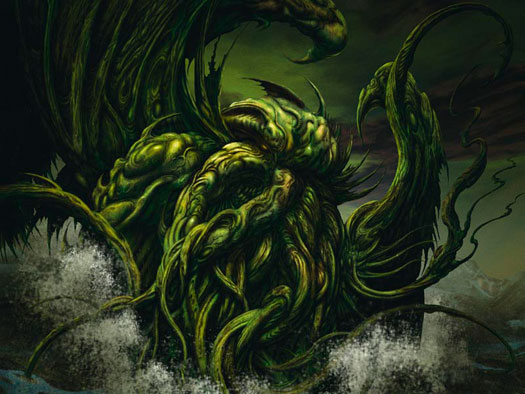
Julian House, a designer at Intro in London, also cites Lovecraft’s weird invented world as an influence on his thinking and work for the Ghost Box music label he co-founded. In a series of monochromatic collages presented in two installments in Mark Fisher’s essay about Lovecraft (here and here), House takes visual interpretation of the writer in a less literal, more contemporary, and ultimately perhaps more viable and resonant direction.
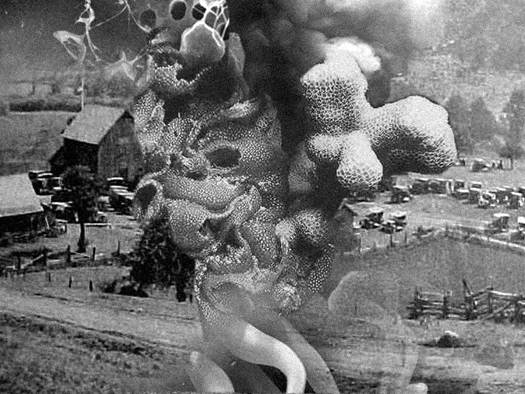


Comments [9]
11.11.10
02:33
I had a brief skirmish with the Del Toro project around 2003 when a friend put me in touch with the producers who would have been guiding the film through Dreamworks. They were keen on my doing some concept designs but Mr Del Toro remained non-commital, and he didn't say so at the time but I think he had subsequent collaborator Wayne Barlowe in mind as the principal visualiser. I hope Barlowe is working on the final thing, he has an extraordinary imagination.
In any case, this had me pondering for a year or so the question of how you render an alien architecture. I didn't arrive at any definite conclusions or sketch anything but the question remains an challenging one when so much of what constitutes the alien in films or TV usually looks far too terrestrial. Ridley Scott's solution was to draft HR Giger (and many Lovecraft enthusiasts regard the first Alien film as being one of the best stabs at Lovecraftian cinema); another solution today might be to get a computer to "grow" some architecture using fractal processes.
The last piece of Lovecraft-derived work I did was in 2007 for a Swiss art exhibition based on extracts from the author's Commonplace Book. The entry I chose was "Mirage in time—image of long-vanish'd pre-human city" and you can see the end result here:
http://www.johncoulthart.com/images/big_pic.jpg
11.11.10
02:50
11.11.10
03:52
11.11.10
05:28
11.12.10
05:16
11.12.10
10:32
This is an idea I've thought about too...maybe something like the "Mandelbox"?
http://www.youtube.com/watch?v=AgdN5yO39UI
http://www.boingboing.net/2010/08/16/intensely-psychedeli.html
11.17.10
03:57
11.20.10
06:37
ST Joshi's 'A Subtler Magick' is a good read if anyone is interested (as is his Lovecraft biography if you can track it down).
11.25.10
04:53